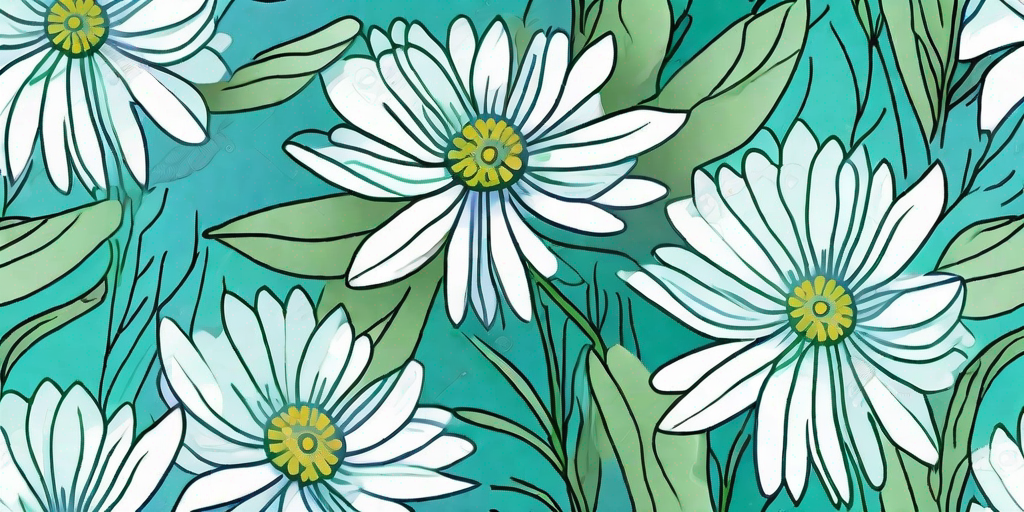
Welcome to the world of gardening, where patience is a virtue, dirt is your friend, and the rewards are blooming marvelous. Today, we're going to dive into the vibrant world of Blue Asters, a flower that's as stunning as it is easy to grow. So, grab your gardening gloves, and let's get started.
What is a Blue Aster?
Before we start planting, let's get to know our star of the show a little better. The Blue Aster, scientifically known as Aster amellus, is a perennial plant native to Europe. This flower is known for its vibrant blue petals and yellow centers, a color combination that can make any garden pop.
Blue Asters are part of the Asteraceae family, which is one of the largest families of flowering plants. So, if you're already a fan of sunflowers, daisies, or chrysanthemums, you're going to love adding Blue Asters to your garden family.
Why Choose Blue Aster?
Why choose Blue Asters, you ask? Well, why not? These flowers are not only beautiful but also hardy and versatile. They're perfect for borders, rock gardens, or even as cut flowers for your home.
Blue Asters are also great for attracting pollinators. So, if you're looking to create a bee and butterfly haven, these flowers are a fantastic choice. Plus, they bloom in late summer and fall, providing color when many other flowers have stopped blooming.
How to Grow Blue Aster
Choosing the Right Spot
Blue Asters are sun-loving flowers. They need at least six hours of sunlight each day, so choose a spot in your garden that gets plenty of light. They can tolerate partial shade, but too much shade can lead to leggy growth and fewer flowers.
These flowers also prefer well-drained soil. They can tolerate a range of soil types, but they don't like to have wet feet. So, if your garden has heavy clay soil, you might want to amend it with some organic matter to improve drainage.
Planting Your Blue Aster
Once you've chosen the perfect spot, it's time to plant. Dig a hole that's twice as wide and the same depth as the root ball of your Blue Aster. Place the plant in the hole, making sure the top of the root ball is level with the soil surface. Backfill the hole with soil, firm it gently, and water thoroughly.
Space your Blue Asters about 1 to 3 feet apart. They need room to grow and spread, and good air circulation can help prevent diseases.
Caring for Your Blue Aster
Watering and Feeding
Blue Asters are drought-tolerant once established, but they'll need regular watering during their first growing season. Water deeply once a week, or more often during hot, dry periods.
As for feeding, these flowers are not heavy feeders. A layer of compost in spring should be enough to keep them happy. If your soil is poor, you can also add a slow-release fertilizer at planting time.
Pruning and Deadheading
Pruning is not necessary for Blue Asters, but it can help create a bushier growth. You can pinch back the tips of the stems in early summer if you want a more compact plant.
Deadheading, or removing spent flowers, can encourage more blooms. Plus, it keeps your plant looking neat and tidy.
Common Problems and How to Solve Them
Blue Asters are relatively trouble-free, but they can sometimes be affected by powdery mildew, rust, or aster yellows. Good plant hygiene and proper spacing can help prevent these problems. If your plant does get sick, remove the affected parts and treat with a suitable fungicide or insecticide.
Slugs and snails can also be a problem, especially for young plants. Use a slug and snail bait or trap to protect your Blue Asters.
Frequently Asked Questions
- Are Blue Asters deer-resistant?
Yes, Blue Asters are generally deer-resistant. However, a hungry deer will eat almost anything, so it's not a 100% guarantee.
- Can I grow Blue Asters in containers?
Absolutely! Blue Asters are great for container gardening. Just make sure your container has good drainage.
- Do Blue Asters attract bees and butterflies?
Yes, Blue Asters are excellent for attracting pollinators. They provide a late-season nectar source for bees and butterflies.
So there you have it, a comprehensive guide to growing and caring for Blue Asters. With their vibrant colors and easy care, these flowers are a fantastic addition to any garden. So why not give them a try? Your garden (and the bees) will thank you.















